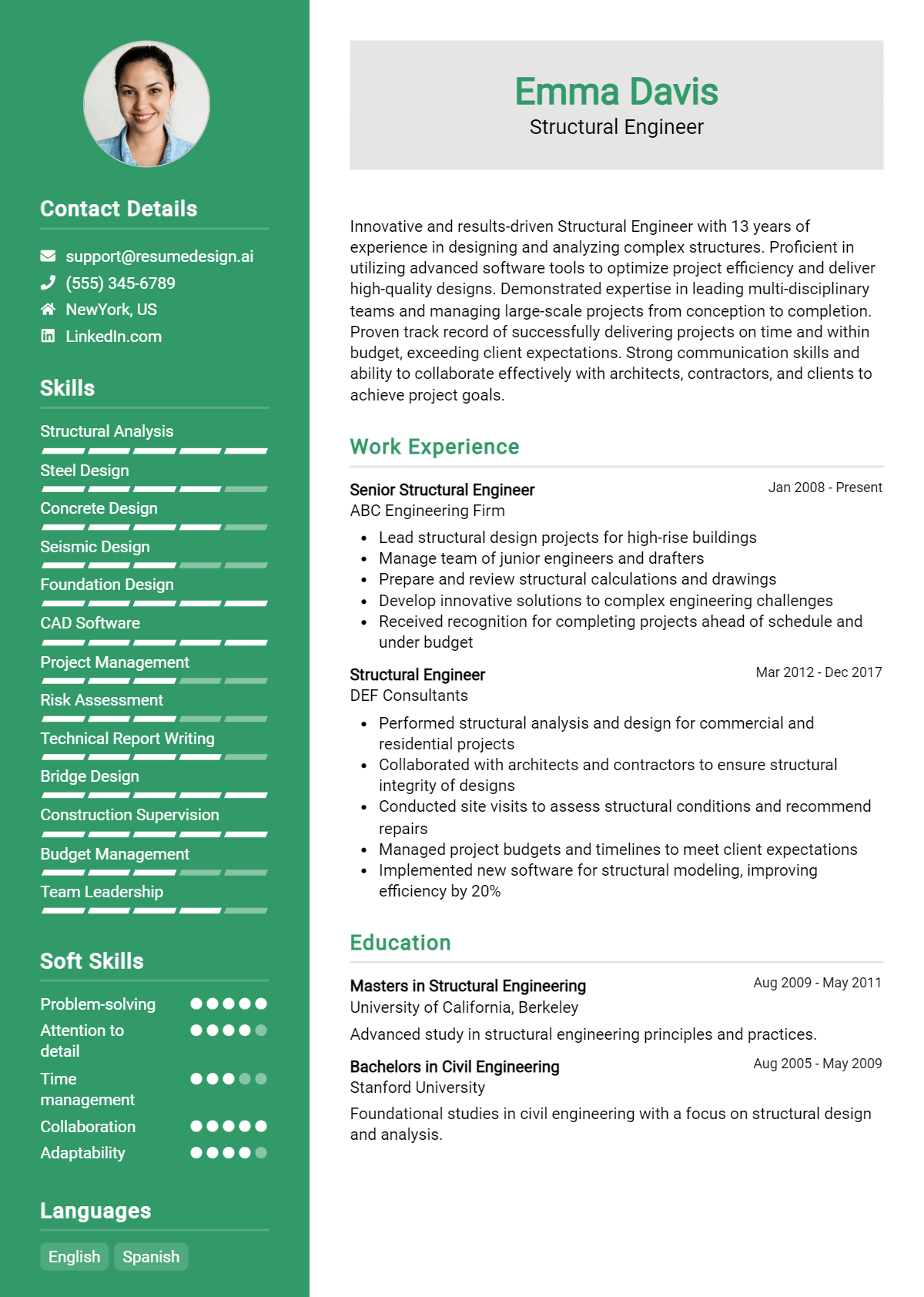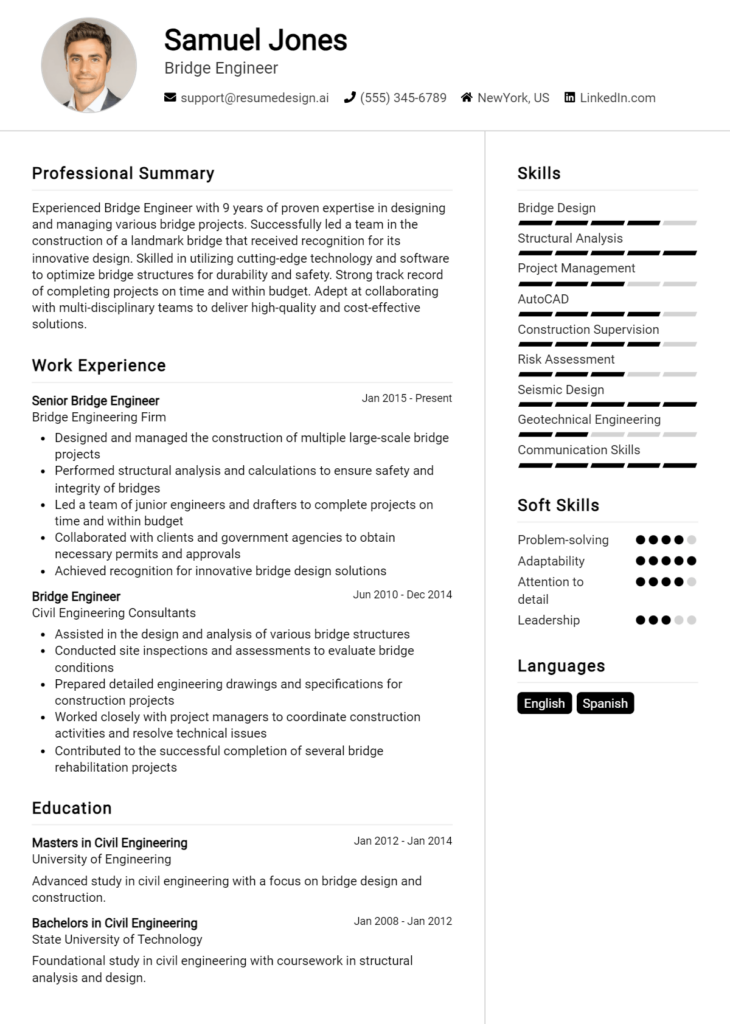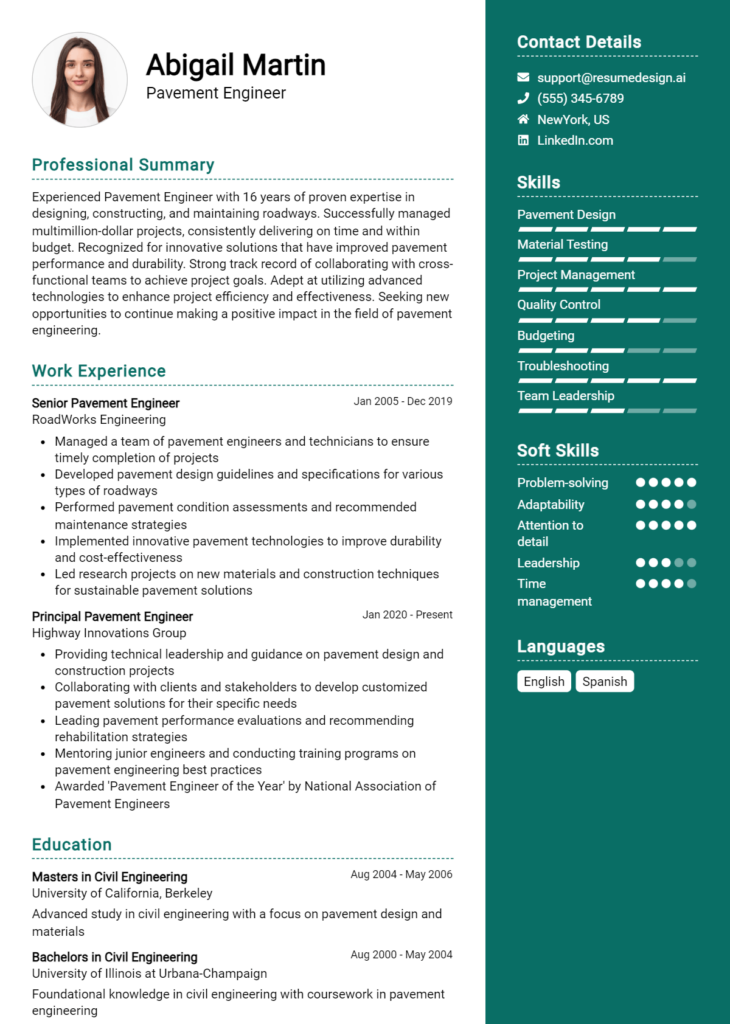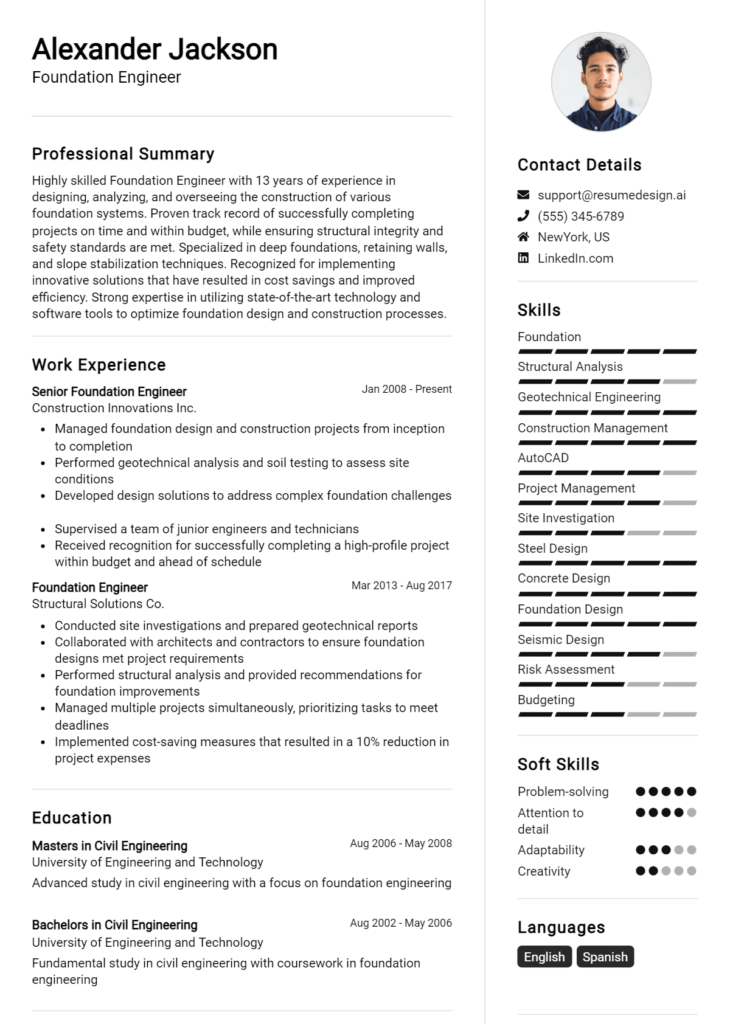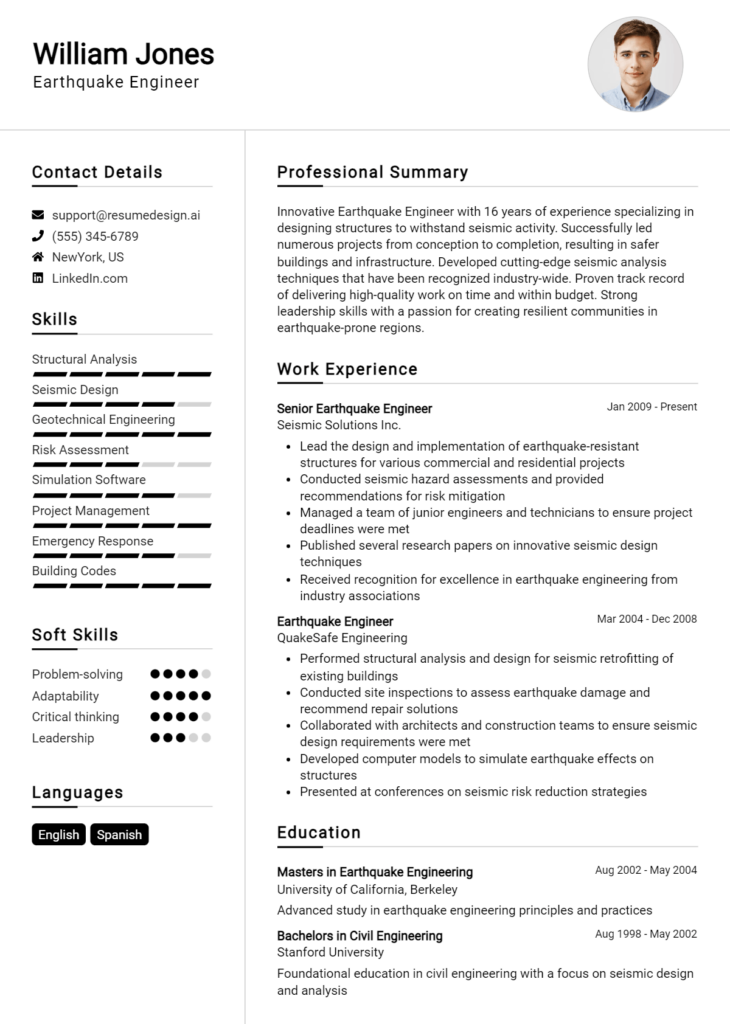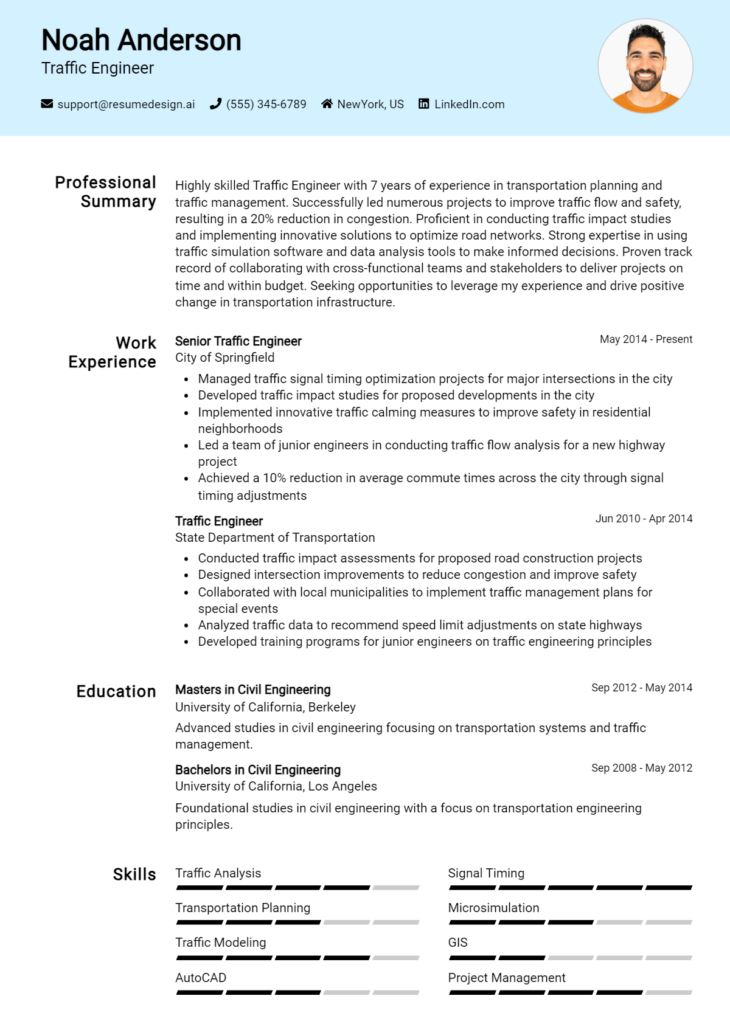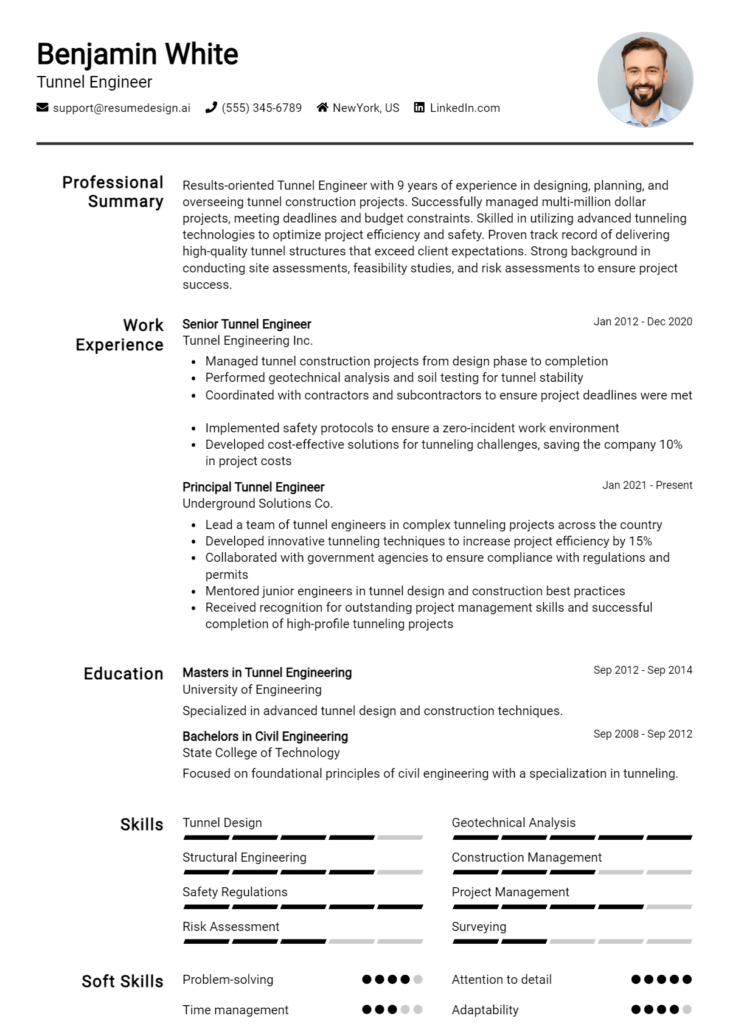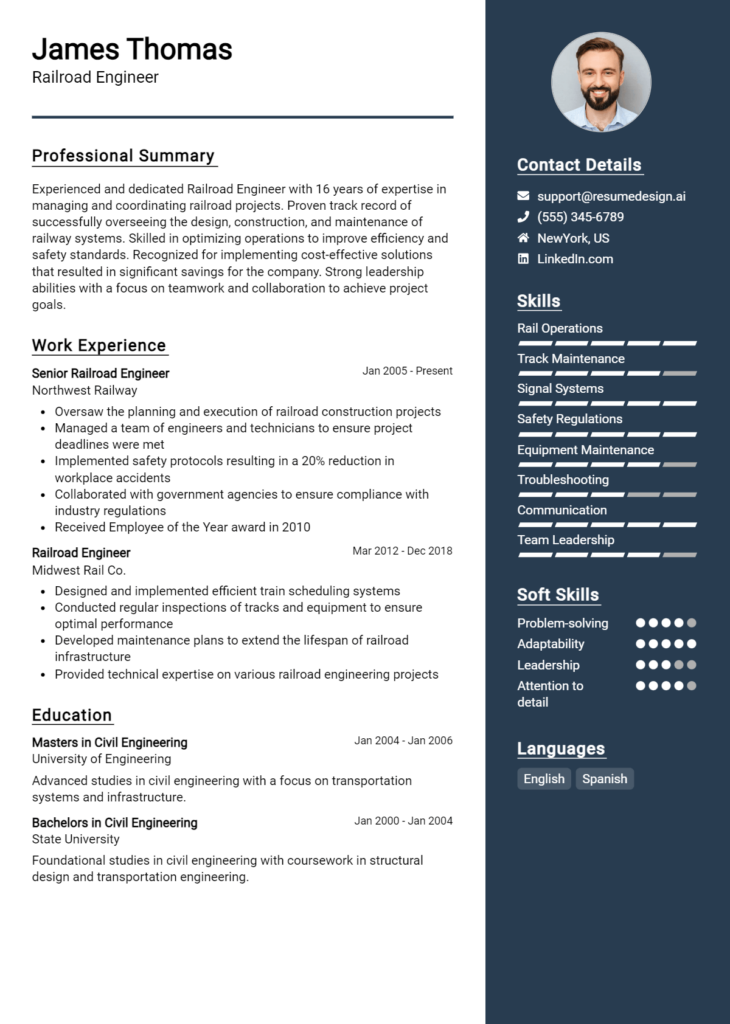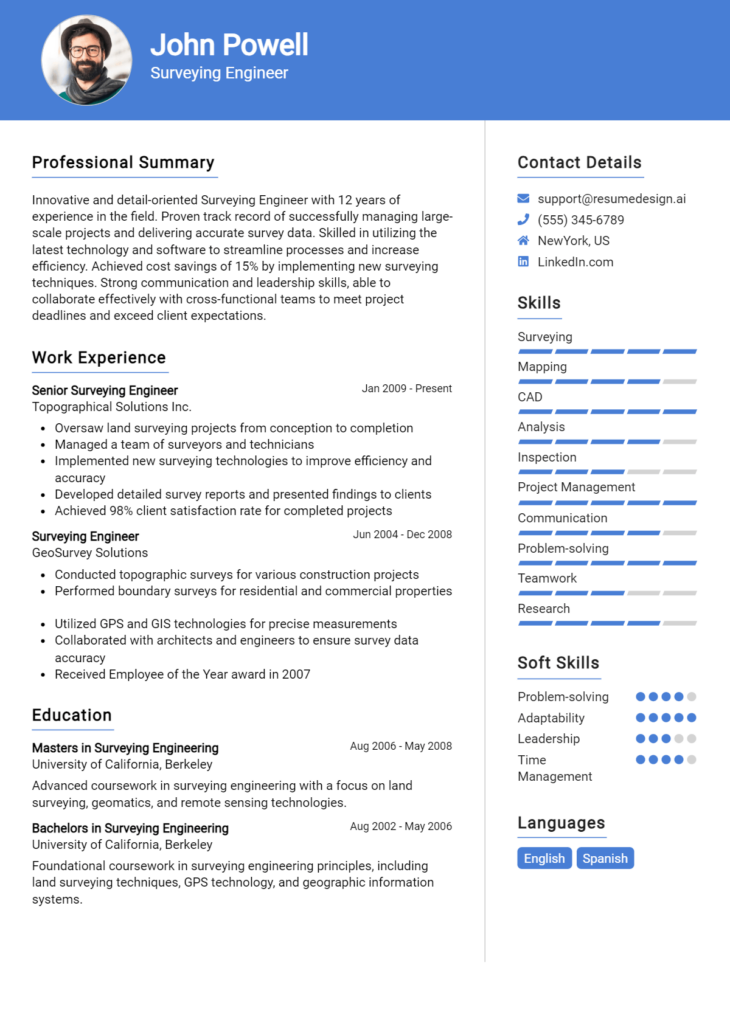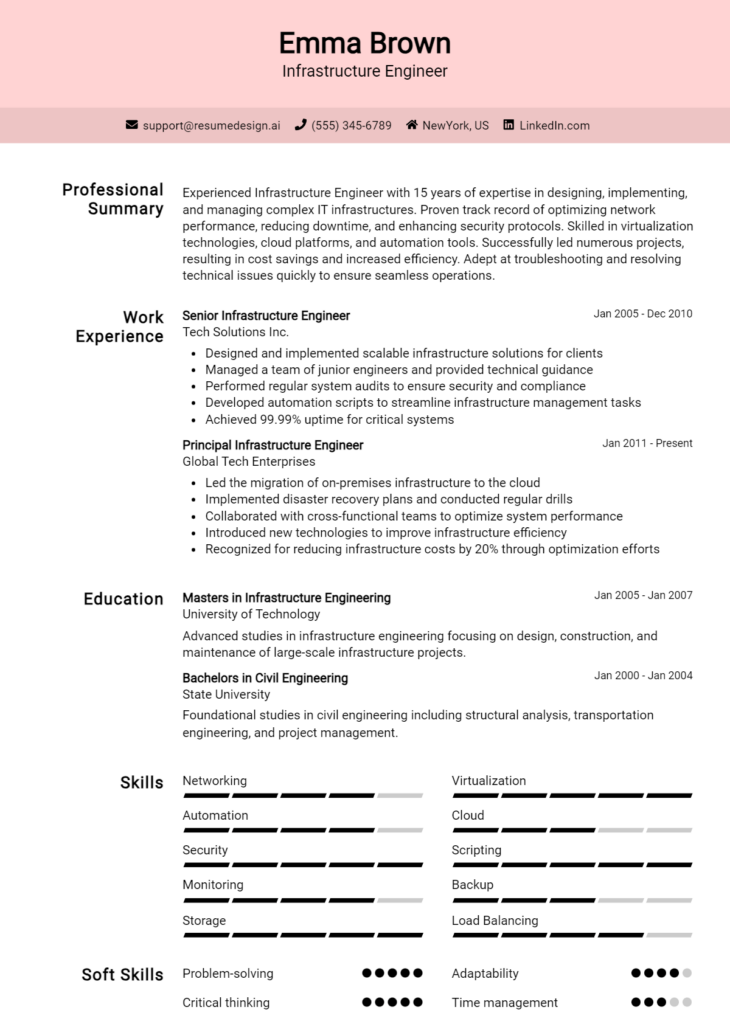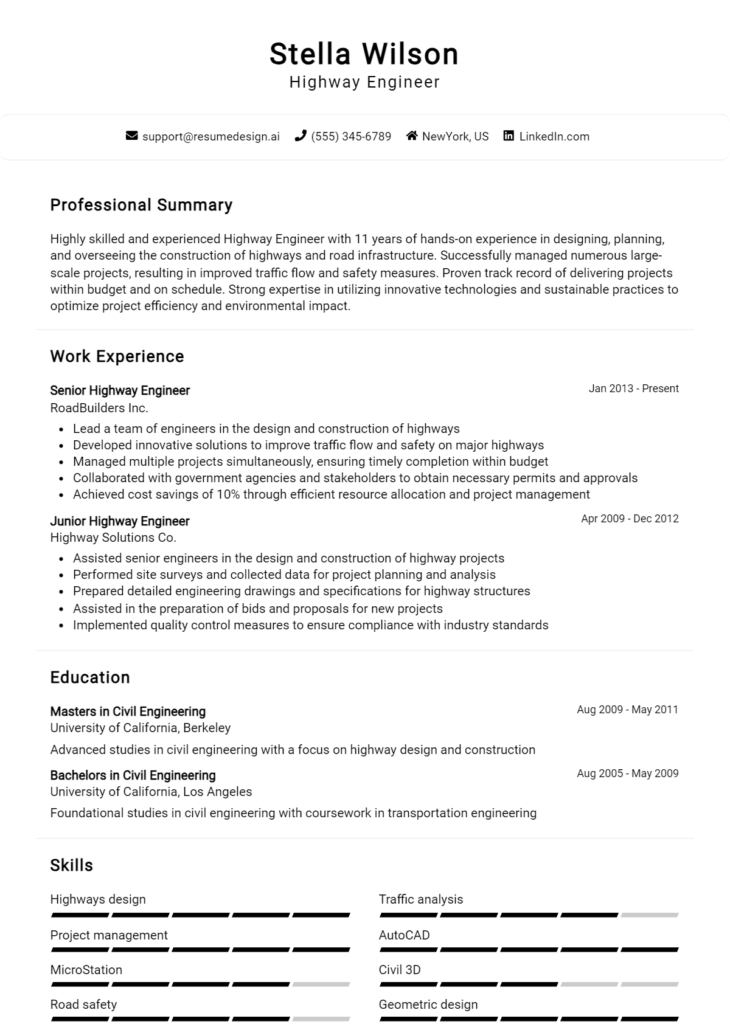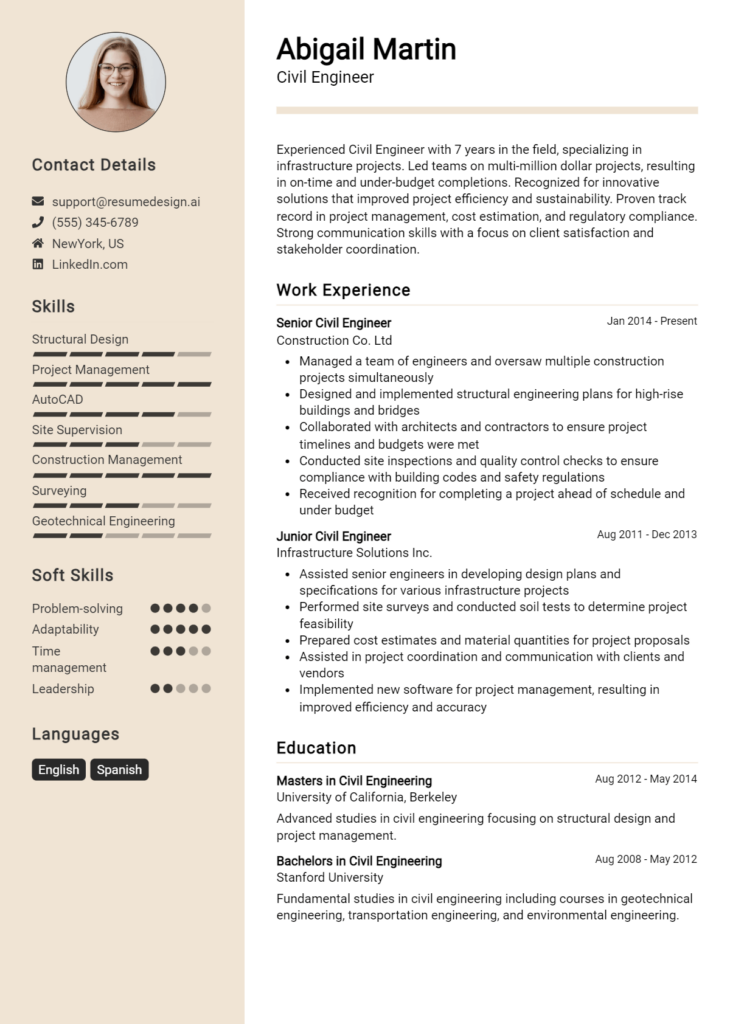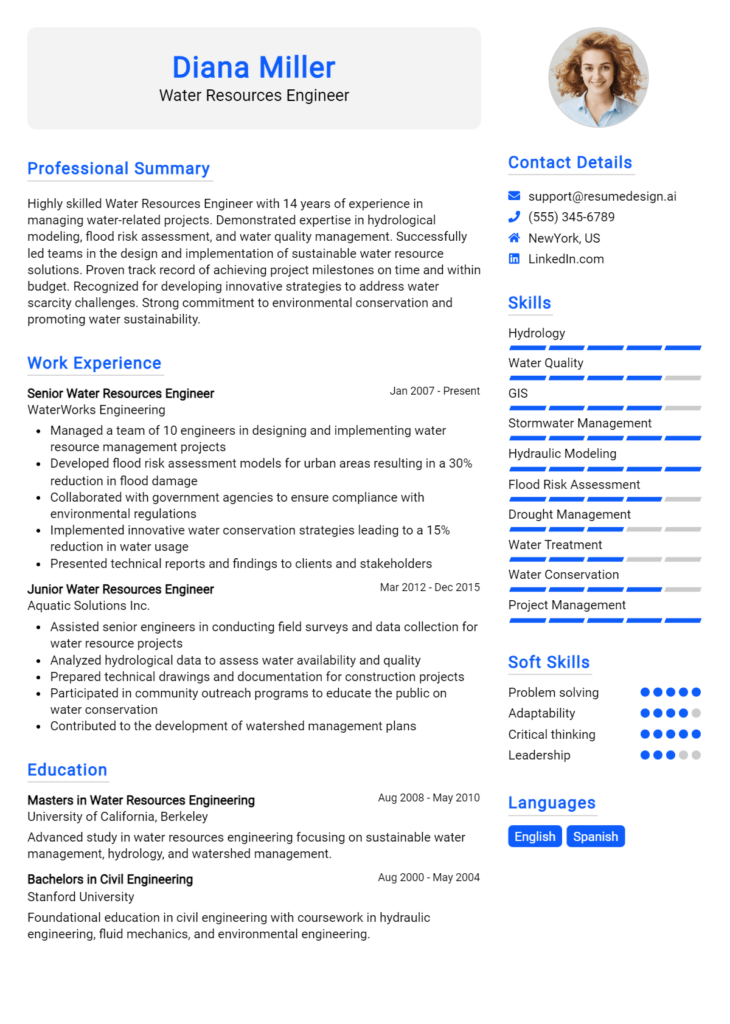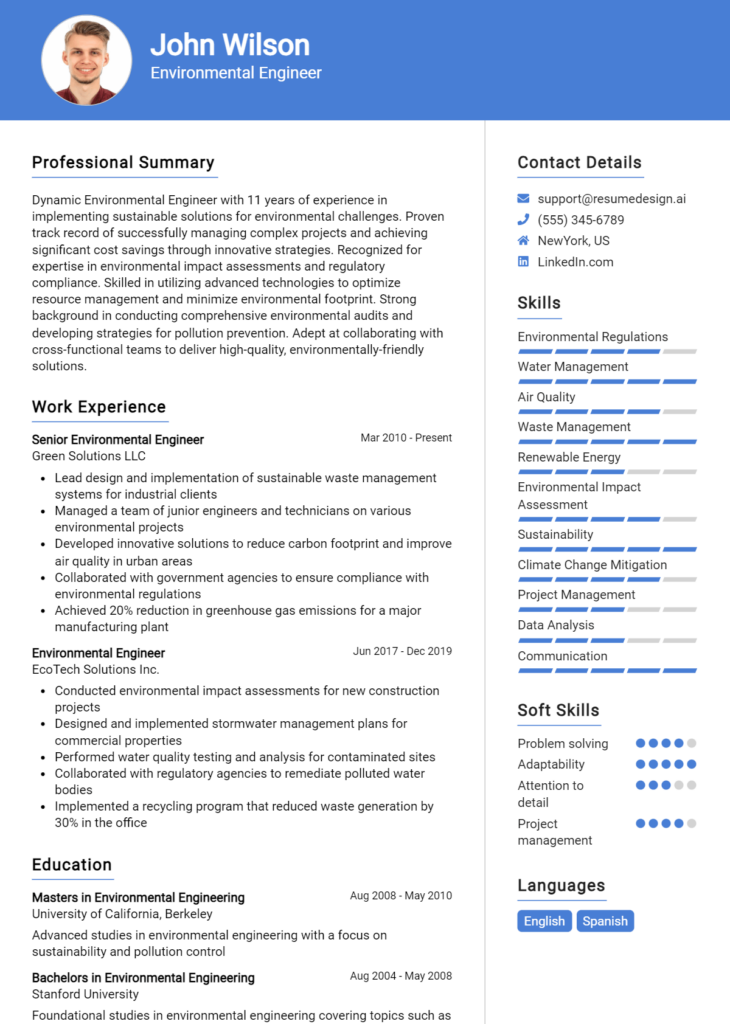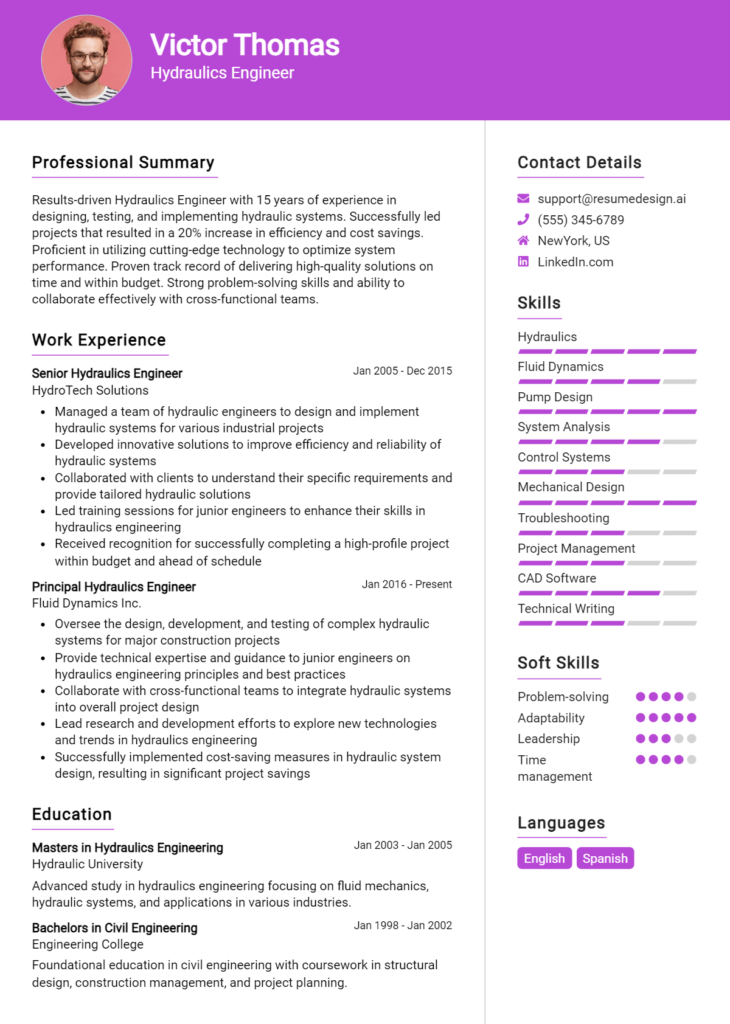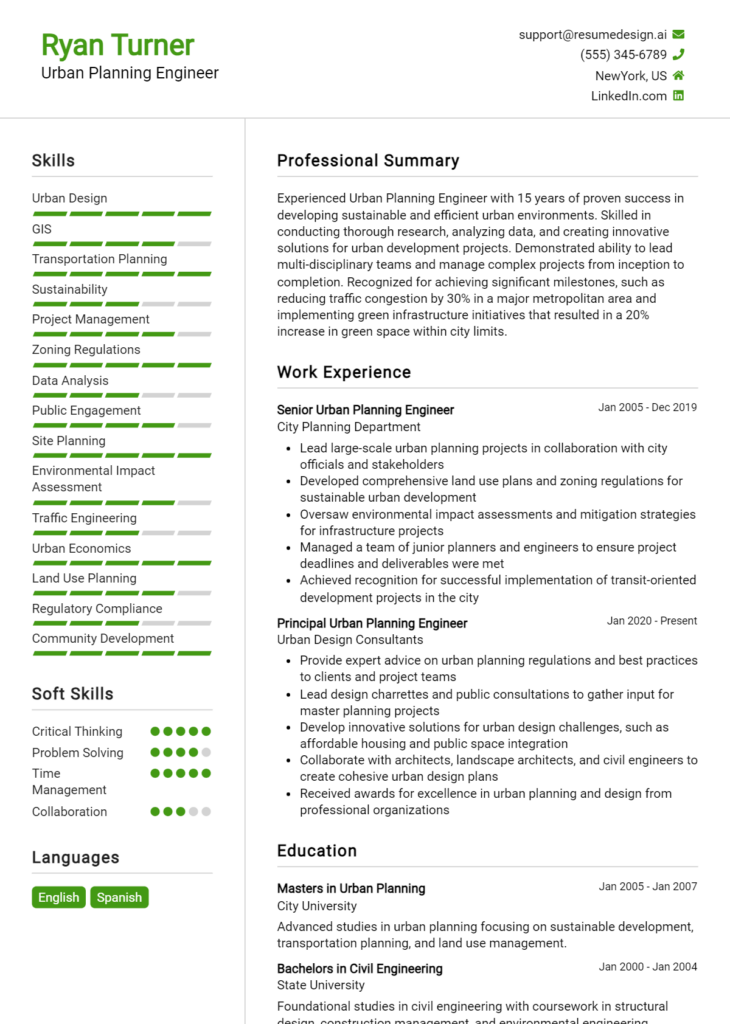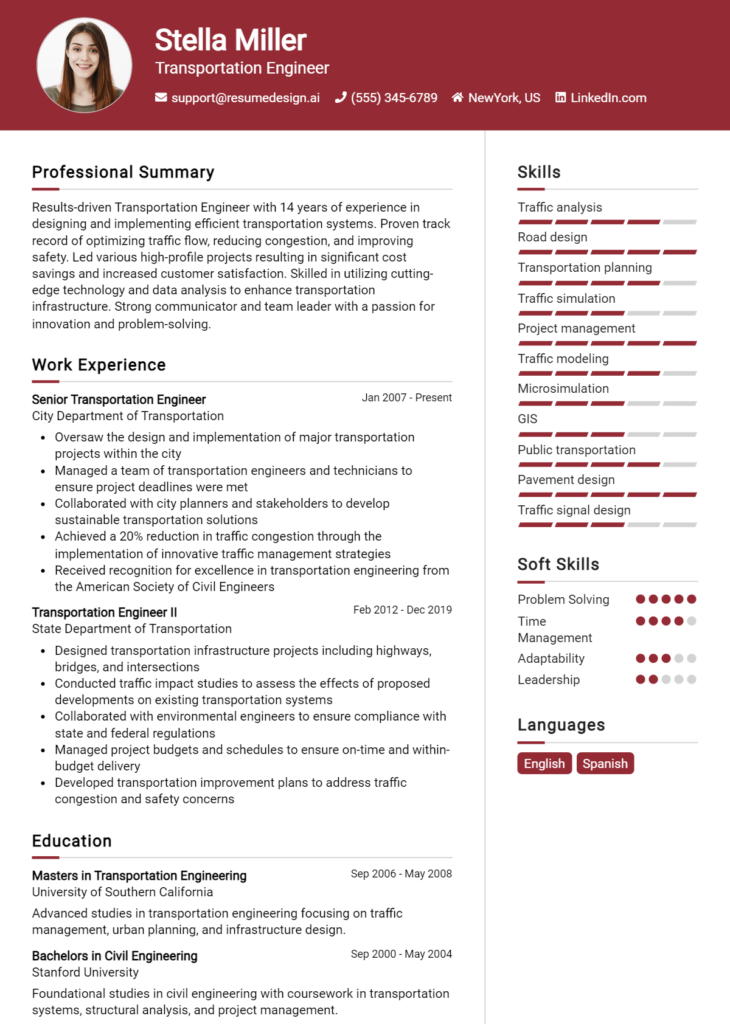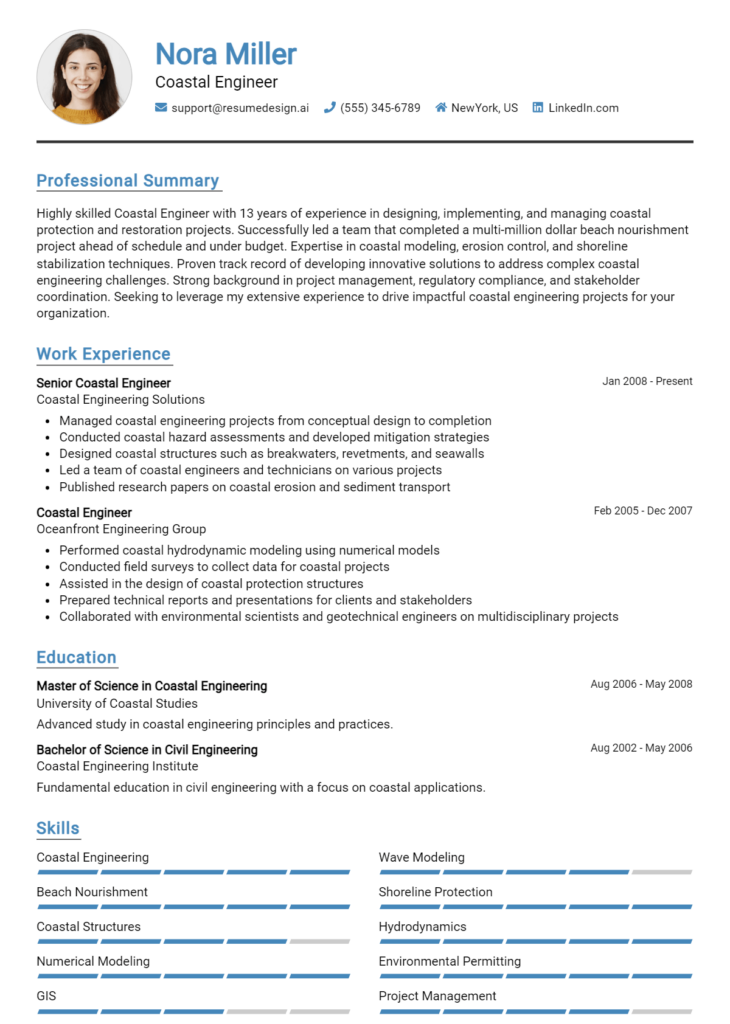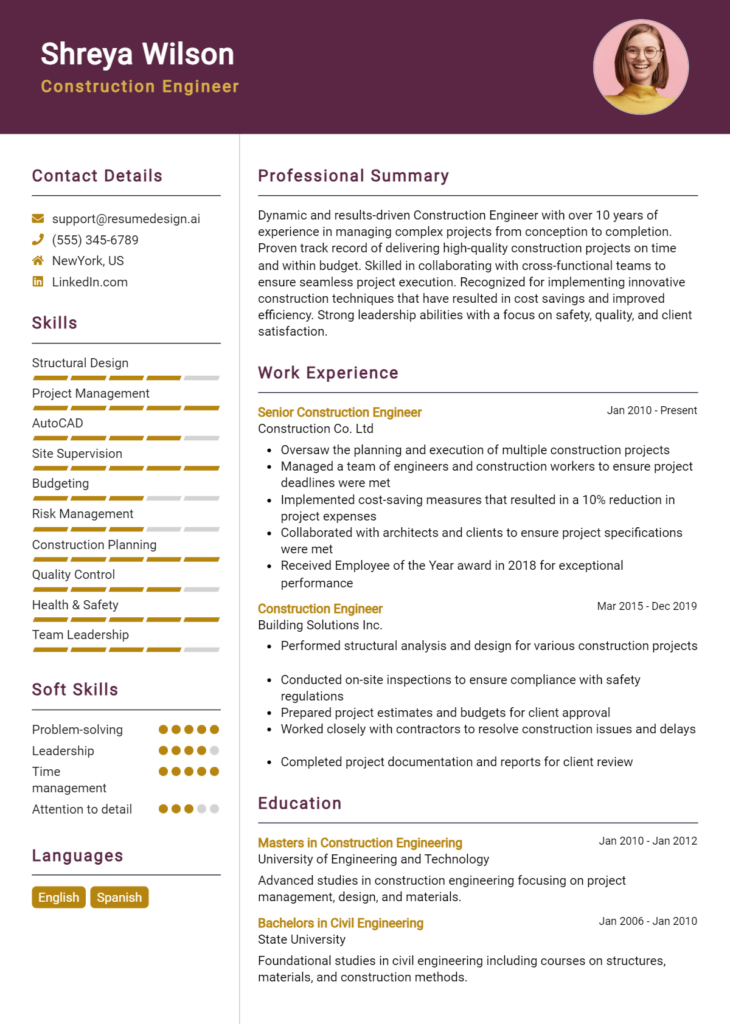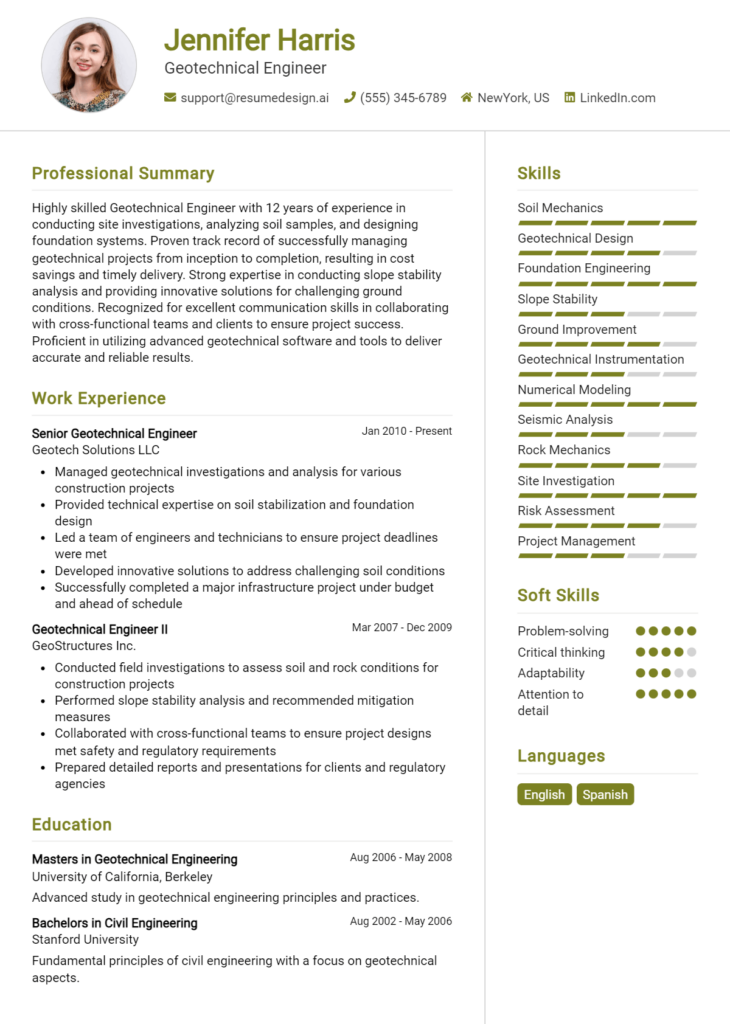Structural Engineer Core Responsibilities
A Structural Engineer plays a vital role in designing and analyzing structures, ensuring safety and compliance with building codes. Key responsibilities include conducting feasibility studies, creating detailed designs, and collaborating with architects, contractors, and other engineers. Proficiency in technical software, operational insight, and strong problem-solving skills are essential to address complex challenges. These abilities not only contribute to the successful completion of projects but also align with the organization's overarching goals. A well-structured resume is crucial for highlighting these qualifications effectively.
Common Responsibilities Listed on Structural Engineer Resume
- Designing and analyzing structural components and systems.
- Conducting site assessments and feasibility studies.
- Collaborating with architects and construction teams.
- Preparing detailed engineering reports and documentation.
- Ensuring compliance with local building codes and regulations.
- Utilizing structural analysis software for design simulations.
- Performing inspections and assessments of existing structures.
- Providing technical guidance and support to project teams.
- Estimating project costs and materials required.
- Participating in project planning and scheduling meetings.
- Addressing and resolving engineering challenges effectively.
High-Level Resume Tips for Structural Engineer Professionals
In the competitive field of structural engineering, a well-crafted resume is not just a document; it's your first opportunity to make a lasting impression on potential employers. Your resume serves as a powerful marketing tool that showcases your skills, achievements, and professional journey, reflecting your capabilities as a structural engineer. It’s crucial to present your qualifications in a way that aligns with the specific needs of the job you’re applying for. This guide will provide practical and actionable resume tips specifically tailored for structural engineer professionals, ensuring that your resume stands out in a sea of applicants.
Top Resume Tips for Structural Engineer Professionals
- Tailor your resume to the job description by incorporating relevant keywords and phrases that match the requirements.
- Highlight your educational background, including degrees and certifications relevant to structural engineering.
- Showcase your relevant experience by detailing specific projects, your role, and the impact of your contributions.
- Quantify your achievements with metrics, such as cost savings, project timelines, or safety improvements, to demonstrate your effectiveness.
- Include industry-specific skills, such as proficiency in structural analysis software, project management tools, and knowledge of building codes.
- Use clear and concise language, avoiding jargon unless it is commonly understood in the engineering field.
- Incorporate a professional summary that encapsulates your career highlights and showcases your unique value proposition.
- List relevant professional affiliations or memberships, such as ASCE or SEI, to demonstrate your commitment to the field.
- Utilize a clean, organized layout that enhances readability and allows key information to stand out.
- Proofread your resume thoroughly to eliminate any grammatical errors or typos, as attention to detail is critical in engineering.
By implementing these tips, you can significantly increase your chances of landing a job in the structural engineering field. A well-structured and targeted resume will not only showcase your qualifications effectively but also demonstrate your commitment to professionalism and excellence, making you a more attractive candidate to potential employers.
Why Resume Headlines & Titles are Important for Structural Engineer
In the competitive field of structural engineering, a well-crafted resume headline or title serves as a critical first impression for potential employers. It encapsulates a candidate's key qualifications and expertise in a concise and impactful manner, effectively summarizing their professional identity at a glance. A strong resume headline can immediately grab the attention of hiring managers, helping them quickly assess the applicant's relevance to the job. By being relevant and directly related to the specific position being applied for, a compelling headline can set the tone for the entire resume, making it essential for candidates to invest time and thought into this key element.
Best Practices for Crafting Resume Headlines for Structural Engineer
- Keep it concise: Aim for one impactful phrase that captures your essence.
- Be role-specific: Tailor the headline to reflect the specific structural engineering position you are seeking.
- Highlight key skills: Incorporate essential skills or areas of expertise relevant to the job.
- Use action-oriented language: Choose strong verbs that convey your capabilities.
- Include certifications or credentials: If applicable, mention relevant licenses or certifications.
- Avoid jargon: Use clear language that can be understood by all hiring managers.
- Update for each application: Personalize your headline for different job applications to align with the job description.
- Make it memorable: Use creative phrasing to stand out from the competition.
Example Resume Headlines for Structural Engineer
Strong Resume Headlines
Innovative Structural Engineer with 10+ Years of Experience in High-Rise Design
Licensed Professional Engineer Specializing in Earthquake-Resistant Structures
Detail-Oriented Structural Engineer with Proven Track Record in Project Management
Dynamic Structural Engineer Skilled in Sustainable Design and Analysis
Weak Resume Headlines
Engineer Looking for Opportunities
Experienced Professional in Engineering
Structural Engineer Seeking a Job
The strong headlines are effective because they are specific, descriptive, and immediately convey the candidate's qualifications and strengths in structural engineering. They highlight unique skills, experience, and focus areas that align with the job description, making them memorable and engaging for hiring managers. In contrast, the weak headlines fail to impress due to their vagueness and lack of detail. They do not provide any insight into the candidate's capabilities or how they stand out from others, making it easy for hiring managers to overlook them in a crowded applicant pool.
Writing an Exceptional Structural Engineer Resume Summary
A resume summary is a crucial component for a Structural Engineer, serving as the first impression that potential employers will have of a candidate. A strong summary quickly captures the attention of hiring managers by succinctly showcasing key skills, relevant experience, and notable accomplishments that align with the job role. This brief overview should not only be concise and impactful but also tailored to the specific position being applied for, allowing candidates to stand out in a competitive job market.
Best Practices for Writing a Structural Engineer Resume Summary
- Quantify Achievements: Use numbers and metrics to demonstrate the impact of your work, such as project costs, timeframes, or safety improvements.
- Focus on Relevant Skills: Highlight technical skills specific to structural engineering, such as proficiency in design software, knowledge of building codes, or experience with material selection.
- Tailor for the Job Description: Customize your summary to reflect the specific requirements and preferences outlined in the job posting.
- Keep It Concise: Aim for 2-4 sentences that deliver maximum information with minimal words.
- Use Action Words: Start sentences with powerful verbs such as "designed," "managed," or "implemented" to convey a sense of proactivity and effectiveness.
- Showcase Soft Skills: Include interpersonal skills like teamwork, communication, and problem-solving that are essential for collaboration in engineering projects.
- Highlight Industry Experience: Mention specific sectors or types of projects you have worked on, such as commercial buildings, bridges, or infrastructure projects.
- Emphasize Certifications: If applicable, include relevant certifications or licenses that enhance your qualifications as a Structural Engineer.
Example Structural Engineer Resume Summaries
Strong Resume Summaries
Dynamic Structural Engineer with over 7 years of experience in designing and overseeing the construction of commercial buildings, resulting in a 20% reduction in overall project costs through innovative material utilization and efficient project management.
Detail-oriented Structural Engineer skilled in using AutoCAD and SAP2000, with a proven track record of leading cross-functional teams to deliver infrastructure projects on time and under budget, including a $5M bridge project completed 3 months ahead of schedule.
Licensed Professional Engineer with expertise in seismic design and analysis, successfully enhancing the safety and compliance of over 50 residential and commercial structures, achieving a 30% decrease in compliance-related revisions.
Weak Resume Summaries
Experienced engineer looking for opportunities in structural engineering.
I have worked on various engineering projects and have many skills.
The examples of strong resume summaries effectively demonstrate the candidate's specific accomplishments, quantifiable results, and relevant skills tailored to the role of a Structural Engineer. In contrast, the weak summaries lack detail, specificity, and measurable outcomes, making them less impactful and memorable to hiring managers.
Work Experience Section for Structural Engineer Resume
The work experience section of a Structural Engineer resume is crucial as it highlights the candidate's technical skills and practical applications in real-world projects. This section not only reflects the engineer’s ability to design and implement structural solutions but also showcases their capacity to manage teams and deliver high-quality products on time and within budget. By quantifying achievements and aligning past experiences with industry standards, candidates can effectively demonstrate their value to potential employers, making it easier for hiring managers to assess their qualifications and fit for specific roles.
Best Practices for Structural Engineer Work Experience
- Focus on quantifiable achievements, such as percentage improvements in efficiency or cost savings.
- Use specific technical terms and jargon relevant to structural engineering to demonstrate expertise.
- Highlight leadership roles and team management experiences to show collaboration skills.
- Include project names and relevant details to provide context for your contributions.
- Tailor your experience to match the job description and industry standards.
- Showcase a variety of projects, including residential, commercial, and industrial sectors.
- Emphasize problem-solving skills and innovative solutions implemented in previous roles.
- Maintain a clear and concise format to enhance readability and impact.
Example Work Experiences for Structural Engineer
Strong Experiences
- Led a team of 5 engineers in the design and execution of a $10 million commercial building project, achieving a 15% reduction in material costs through innovative design techniques.
- Developed and implemented a new structural analysis process that decreased project turnaround time by 20%, resulting in improved client satisfaction ratings.
- Collaborated with multidisciplinary teams on a high-rise project, coordinating with architects and contractors to ensure adherence to safety regulations and project deadlines.
- Successfully managed the structural integrity assessment of a bridge, leading to a $500,000 grant for renovations based on the findings presented to city officials.
Weak Experiences
- Worked on various engineering projects with little detail on contributions or outcomes.
- Assisted in the design of structures without specifying any particular achievements or skills applied.
- Participated in team meetings for project discussions without mentioning any specific role or input.
- Involved in general engineering tasks without quantifying results or impact on project success.
The examples of work experiences are considered strong because they provide specific details, quantifiable outcomes, and a clear demonstration of technical leadership and collaboration in successful projects. In contrast, the weak experiences lack specificity and measurable results, making it difficult for potential employers to assess the candidate's true capabilities and contributions to past projects.
Education and Certifications Section for Structural Engineer Resume
The education and certifications section of a Structural Engineer resume is pivotal in showcasing a candidate's academic achievements and professional qualifications. This segment highlights the essential knowledge base acquired through formal education, as well as any industry-relevant certifications that demonstrate a commitment to professional standards and continuous learning. By including pertinent coursework, specialized training, and recognized credentials, candidates can significantly enhance their credibility and align themselves with the specific requirements of the job role, ultimately making a compelling case for their suitability in the competitive field of structural engineering.
Best Practices for Structural Engineer Education and Certifications
- Include only relevant degrees and certifications that pertain to structural engineering.
- List credentials in reverse chronological order, starting with the most recent.
- Be specific about your degree(s), including your major and any minors or concentrations.
- Highlight advanced certifications, such as Professional Engineer (PE) or Structural Engineering (SE) licenses.
- Incorporate relevant coursework that demonstrates specialized knowledge in areas such as materials science, structural analysis, and design principles.
- Showcase any continuous education or training sessions that keep you updated with industry standards and technologies.
- Ensure all certifications are current, removing any that have expired or are no longer relevant.
- Tailor the section to reflect the specific requirements or preferences outlined in the job description.
Example Education and Certifications for Structural Engineer
Strong Examples
- B.S. in Civil Engineering, University of XYZ, 2020
- Professional Engineer (PE) License, State of ABC, 2021
- Certificate in Structural Analysis and Design, ABC Institute, 2022
- Relevant Coursework: Advanced Structural Design, Earthquake Engineering, and Materials Science
Weak Examples
- B.A. in History, University of DEF, 2018
- Certification in Project Management, not specific to engineering, 2019
- High School Diploma, Graduated 2015
- Old certification in a non-related field, expired 2020
The examples provided are categorized as strong or weak based on their relevance to the structural engineering profession. Strong examples demonstrate a clear focus on engineering education, industry-recognized certifications, and pertinent coursework, all of which align with the responsibilities and expectations of a Structural Engineer. Conversely, weak examples indicate a lack of relevance to the field, showcasing degrees or certifications that do not contribute to the candidate's qualifications for structural engineering roles, thereby diminishing their overall appeal to potential employers.
Top Skills & Keywords for Structural Engineer Resume
In today's competitive job market, the skills highlighted in a Structural Engineer resume play a crucial role in distinguishing candidates from one another. As the backbone of any construction project, structural engineers must possess a diverse mix of both technical and interpersonal abilities. A well-crafted resume that showcases these skills can significantly enhance a candidate’s attractiveness to potential employers. By aligning your qualifications with the expectations of the industry, you not only demonstrate your expertise but also your readiness to tackle complex engineering challenges. This alignment can be achieved through a clear presentation of your hard and soft skills, ensuring that your resume effectively communicates your value in the field.
Top Hard & Soft Skills for Structural Engineer
Soft Skills
- Problem-solving
- Communication
- Team collaboration
- Attention to detail
- Time management
- Adaptability
- Leadership
- Critical thinking
- Project management
- Creativity
Hard Skills
- Structural analysis and design
- Proficiency in CAD software (e.g., AutoCAD, Revit)
- Knowledge of building codes and regulations
- Materials science
- Finite element analysis (FEA)
- Construction methods and techniques
- Geotechnical engineering
- Load calculations
- Risk assessment
- Project estimation
For a more comprehensive understanding of how to articulate your skills effectively, explore our resources on skills and work experience.
Stand Out with a Winning Structural Engineer Cover Letter
I am writing to express my interest in the Structural Engineer position at [Company Name], as advertised on [Job Board/Company Website]. With a Bachelor’s degree in Civil Engineering from [University Name] and over [X years] of hands-on experience in structural design, analysis, and project management, I am excited about the opportunity to contribute to your innovative team. My background in both commercial and residential construction projects has equipped me with a diverse skill set that I believe aligns perfectly with the needs of your organization.
In my previous role at [Previous Company Name], I successfully led a team in the design and implementation of various structural systems, ensuring compliance with local building codes and safety regulations. My expertise in using advanced engineering software such as AutoCAD, SAP2000, and ETABS allowed me to perform complex analyses and create detailed structural models, significantly reducing project timelines and costs. I take pride in my ability to collaborate closely with architects, contractors, and other stakeholders, ensuring that every project not only meets but exceeds client expectations.
What sets me apart is my commitment to continuous learning and professional development. I am currently pursuing my [relevant certification, e.g., PE license or LEED accreditation], which I believe will enhance my contribution to [Company Name]. I am particularly impressed by your commitment to sustainable engineering practices and innovative project delivery, and I am eager to bring my knowledge of green building techniques and energy-efficient design to your upcoming projects.
I am excited about the possibility of joining [Company Name] and contributing to your esteemed projects. Thank you for considering my application. I look forward to the opportunity to discuss how my experience and vision align with the goals of your team.
Common Mistakes to Avoid in a Structural Engineer Resume
When applying for a position as a structural engineer, your resume serves as a critical first impression to potential employers. A well-structured resume can effectively showcase your skills and experiences, while a poorly crafted one may lead to missed opportunities. Below are some common mistakes to avoid in a structural engineer resume, ensuring you present yourself as a competent and professional candidate.
Lack of Specificity: Using vague terms instead of specific skills or accomplishments can make your resume less impactful. Clearly state your expertise in areas such as seismic analysis, CAD software, or project management.
Ignoring Keywords: Failing to incorporate relevant industry keywords can hinder your resume from passing through Applicant Tracking Systems (ATS). Tailor your resume for each job application by including keywords from the job description.
Overly Technical Language: While it’s important to demonstrate your technical knowledge, using overly complex jargon can alienate hiring managers. Strive for a balance by explaining technical concepts in an accessible manner.
Neglecting Soft Skills: Structural engineering requires collaboration and communication. Omitting soft skills like teamwork, leadership, or problem-solving can make your resume less appealing. Highlight these skills alongside your technical abilities.
Formatting Issues: A cluttered or unprofessional layout can detract from your qualifications. Use a clean, consistent format with clear headings, bullet points, and adequate spacing to enhance readability.
Failure to Quantify Achievements: Not providing quantifiable results can weaken your impact. Include metrics and figures to demonstrate the success of your projects, such as cost savings, project timelines, or load capacities.
Omitting Continuing Education: The field of structural engineering is constantly evolving. Failing to mention relevant certifications, training, or courses can signal a lack of commitment to professional development.
Too Lengthy or Too Brief: A resume that is either too long or too short can be problematic. Aim for a concise one to two-page resume that includes relevant information without overwhelming the reader.
Conclusion
In summary, the role of a Structural Engineer is vital in the construction and design of safe, functional, and aesthetically pleasing structures. Key responsibilities include analyzing load-bearing capacities, ensuring compliance with building codes, and collaborating with architects and other engineers throughout the design and construction processes. Effective communication, problem-solving skills, and a strong understanding of materials and physics are essential for success in this field.
As you reflect on your qualifications and experiences, consider reviewing your Structural Engineer resume to ensure it effectively showcases your skills and achievements. A well-crafted resume can significantly enhance your chances of standing out in a competitive job market.
To assist you in this process, take advantage of the following resources:
- Explore a variety of resume templates that can help you create a professional layout tailored to your unique experiences.
- Use our resume builder to easily construct a personalized resume that highlights your strengths.
- Check out resume examples for inspiration on how to present your qualifications effectively.
- Don't forget to pair your resume with a compelling cover letter template to further enhance your application.
Take the first step towards your dream job by reviewing and updating your resume today!

